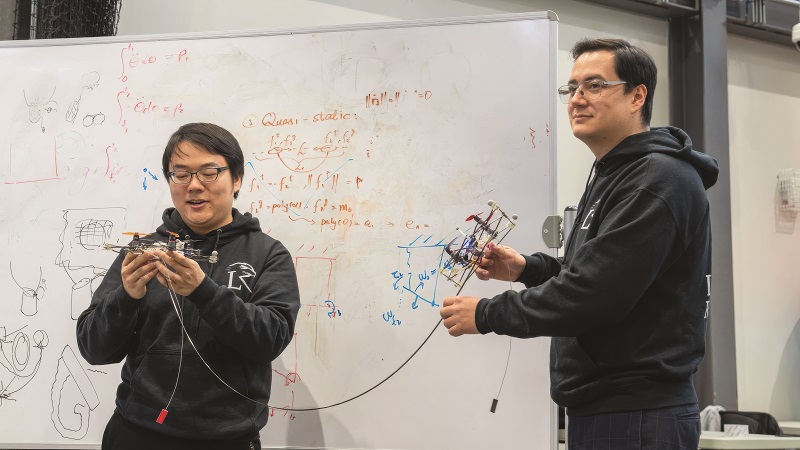Enabling robotic arms to tie knots in cables

Researchers have developed a technique for UAVs to pick up large objects using knotted cables rather than robotic arms, writes Nick Flaherty.
The team at Lehigh University in the US is developing algorithms that will allow UAVs to overcome friction and tie a knot in a cable without getting entangled.
Traditional aerial systems have centred on robotic arms for autonomous grasping, which are heavy and hard to fly with. Cables benefit from being lightweight and flexible, allowing versatile manipulation. They can also conform to objects of various shapes and sizes, increasing the range of tasks that an aerial robot can perform. Using cables also reduces the overall weight of the system, resulting in a longer flight duration.
“The goal would be to get to a point where people don’t have to touch the robot at all,” said David Saldaña, assistant professor of computer science & engineering at Lehigh.
“We could just tell the robot to pick up that box of medicine and deliver it. We can’t use traditional reinforcement-learning algorithms for this. We have to make our own because they have to learn fast since robots in the air need to operate fast.”
“We have a new concept called a polygonal hitch,” explained Saldaña. “Pairs of robots can make one side of the polygon and are in charge of that side only. The polygon can be scaled up or down, depending on the size of the object you’re moving.”
Topology-based planning algorithms will be developed to form the hitches, providing the specific movements required for the UAV. The aim is to create a library of knots to streamline the transportation process, which can be adjusted to requirements.
The research is aimed at improving the use of UAVs in applications such as construction, logistics and disaster management.
UPCOMING EVENTS























